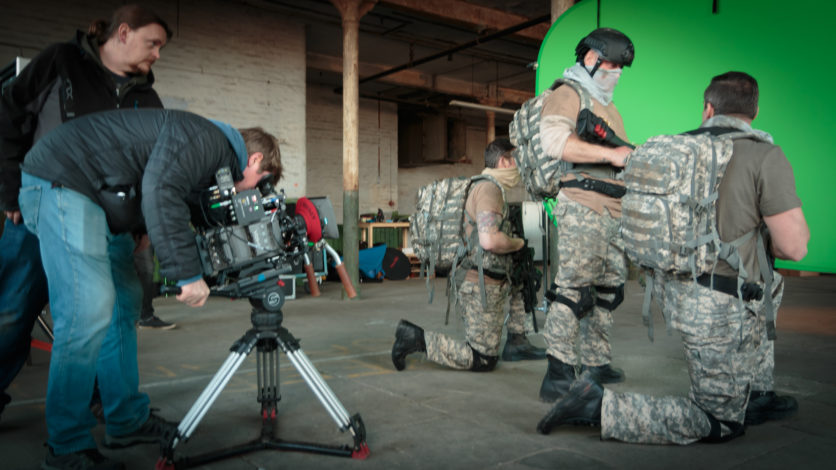TV VFX for dummies: what are 3D VFX?

We are in a golden age of visual effects. CGI visuals have never been more in demand. Your expertise in the industry may lie elsewhere so you might not realise the actual breadth and depth of what a VFX supplier like us can provide.
3D VFX are more than an alien invasion or a superhero fight. VFX is a multi-faceted process, one that we will break down over the course of our ‘CGI for dummies’ series! With our three-part adaptation of War of the Worlds looming, we couldn’t think of a better time to dive into the world of 3D visual effects for TV.
What is VFX for TV shows?
At its most basic, visual effects (VFX) are the imagery created, altered, or enhanced for a production. They accomplish that which cannot be done during live-action shooting. They aren’t to be confused with special effects (SFX) which are usually done on location during filming. Explosions are a common example, though they are also being replaced by digital recreations as these are safer and cheaper.
On a large scale, they can create the impractical or impossible, such as new background environments, props such as planes, trains, or boats, or life-like animals and creatures. But they are also frequently used for small, simple fixes and to save time and money.
As we said, they aren’t limited to your big-budget action flicks. Today, you’ll be hard-pressed to find a movie, TV show, or advert that doesn’t use VFX in some way. In the coming months, we’ll be covering everything VFX. Here’s what you can expect in our upcoming series.
Like any industry, the VFX sector has its own dictionary of jargon. It can make the VFX process seem like a Gordian knot, but every term has a simple definition. In this blog, we’ll break down the ABCs of VFX in an easily digestible way. You can learn terms like keying, which is where you replace the green from a green screen with whatever background you like.
How to plan your CGI elements
Creating your CGI elements is one thing; planning them is a whole other process. From concept art to pre-visualisation, we’ll guide you through the process of planning the integration of your assets. You can’t expect to direct your show if you don’t know where your assets will be and when. Look out for our simple step-by-step guide in the future.
Asset building
This might be the first thing you think of when you think ‘VFX’ – creating 3D assets for the production. You can create anything you can think of: from a squadron of planes to a giant three-legged machine and a simple crate, whatever you need. But even this aspect has multiple parts to it. We’ll save the details for a future blog, so keep your eyes peeled.
Particle effects
3D modelling can cover even the tiniest details, including particles like smoke or dust. Particle effects – or particle systems – are made up of tiny particles that, when combined, create the illusion of a greater entity. They will also have their own ‘lifespan’ of sorts, so you can realistically create something like embers in a fire or droplets of rain. The smallest details can make the biggest difference, so look out for a blog on this in the future.
2D vs 3D
If you read 2D and thought we were talking about animated cartoons, then this blog will be for you. Because when we say 2D, we’re talking about visual effects that can be achieved in a 2D space, as opposed to a 3D one. For example, your backgrounds might be 2D matte painting backdrops placed behind your actors. While 3D VFX are great, you can achieve an awful lot more cost-effectively with 2D VFX. We’ll dive into this topic more in a future blog.
CGI vs practical effects
How do you know when to use practical effects or CGI? Is a practical explosion better looking than a CG one? Hopefully, we’ll be able to break down the pros and cons of both for you, so you can figure out how to save yourself time and money during production. Look out for that blog in the near future.
Creating realistic, seamless 3D visual effects takes time and effort. Over the coming months, we hope you’ll find a new appreciation for this art. Check back regularly for another taste of the world of VFX. We hope to see you soon!
At REALTIME, we have the staff and expertise to carry out everything we just talked about. So if you have an exciting project in the pipeline and would like to discuss your visual effects needs, please get in touch with me at [email protected].

